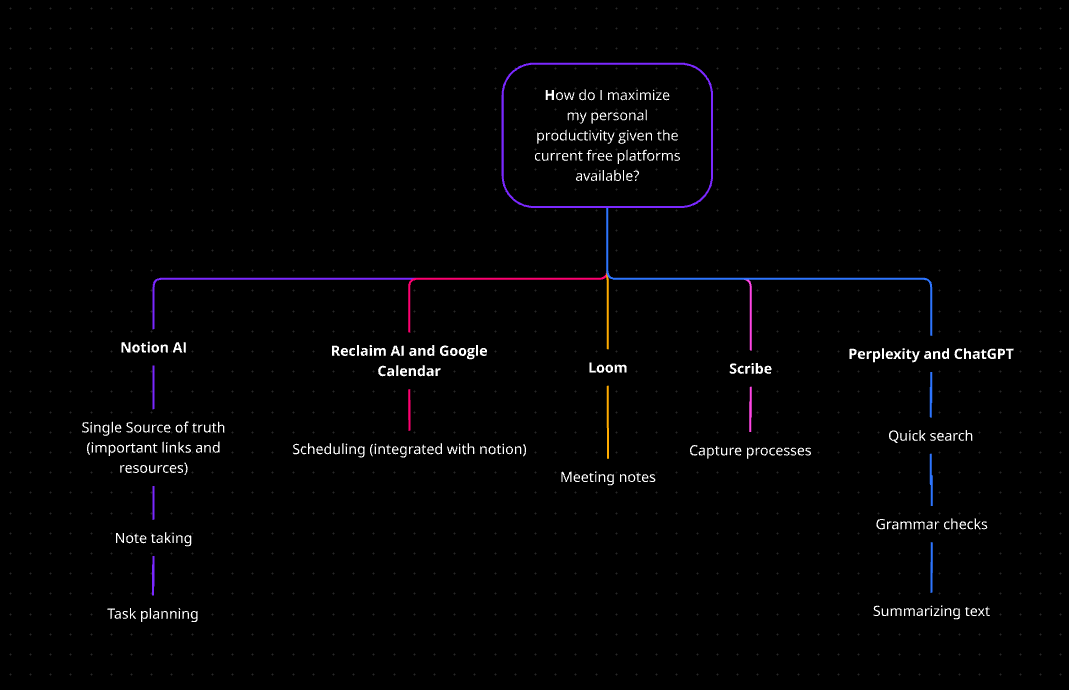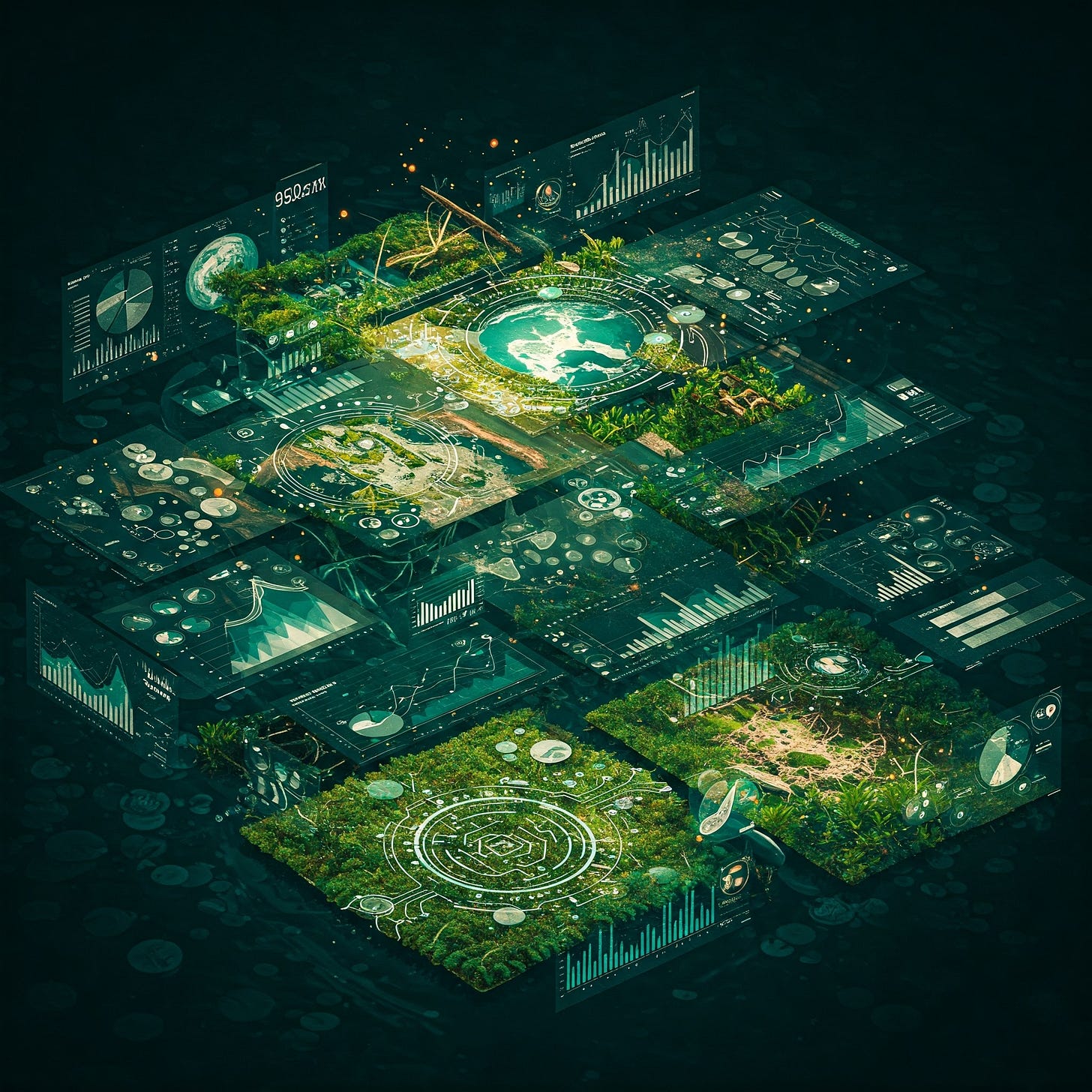Digital Toolkit: Upskilling with Purpose
Building my digital toolkit in an intentional manner was one of the new skills I learned in the McKinsey Forward program. Contrary to its name, there's more to it than the tools themselves.
Digital Toolkit was one of the modules I took in the McKinsey Forward program last year. It taught me a high level of the current technological trends impacting industry and society and how to build one’s toolkit with intent. Contrary to the title, building your digital toolkit is about your sense of purpose and understanding what needs to change instead of gaining technological knowledge on its own. This reminded me why many organizations fail to materialize the benefits of technologies they build or buy from external vendors (e.g., AI and SaaS platforms like Notion, Asana, or Smartsheet).
Here are my takeaways from the module:
Sense of Purpose Breeds Success
In my previous post about the Adaptability and Resilience module, I mentioned that learning with intent leads to more successful outcomes. People tend to take the time to understand why they’re learning and how it can help them in their endeavours.
The rapid pace of technological advancements and the rise of new business models make it easy for many to fall into a rabbit hole of concepts and surface-level understanding. I call this the cult following trap, where someone tries to gain knowledge of a certain technology or field just because people talk about it.
What if I told you there’s a better way to learn that new technology or business model you are curious about? That’s when the sense of purpose comes in. A sense of purpose transforms your skill-learning ability from a check-in-the-box exercise to a meaningful endeavour. It drives motivation, deepens engagement, and enhances outcomes. Purpose ultimately helps you understand your true potential and will give you confidence in applying your learning.
Fundamentals Over Shortcuts and Cheat Sheets
A big pet peeve of mine is getting unsolicited advice on what to learn next to keep up with changing times. This has become more prevalent now that AI has gone mainstream, and “evangelists” keep making unsupported claims that “AI will replace all jobs” without understanding what it does and how it really works.
Blindly following unsolicited advice in the context of new technologies can cause frustration and failure to achieve mastery, as a new course or certificate on the internet may not be what one person needs in their specific circumstance.
I remember around 2018 when I said I wanted to learn Data Science because it’s the next big thing. I initially thought knowing Python, R, and SQL was sufficient to master the field. Unfortunately, that did not get me anywhere. I finished all the learning paths via DataCamp but still felt a gap.
What’s missing? The fundamentals!
My frustrating experience trying to learn Data Science through boot camps alone helped me understand that a strong foundation (aka the building blocks) is important to proceed to more advanced knowledge or skills. Without this, it will be almost impossible to achieve higher proficiency levels. This problem often leads to gaps in understanding that could hinder mastery. Finally, the foundations ensure that your learning is coherent and structured. [1]
To be clear, there is nothing wrong with cheat sheets if you use them only as a quick reference. However, going through the whole learning journey is a must before creating a good “cheat sheet” to refer back to.
New Ways of Working is Essential, Not a Good to Have
Resistance to change in working ways while advocating for new technologies is no different from expecting a SaaS platform like Notion, Smartsheet, or Perplexity AI to work on your 2003 Blackberry phone. In short, new technologies and business models require new working norms.
New technology is not just about knowing how to use it. It requires assessing what processes need to change, how people collaborate, and how organizations create value. Failure to adapt to new ways of working will hit a roadblock from realizing the new technology’s potential. [2]
One example that comes to mind is the move by some universities or academic staff with big egos to ban artificial intelligence (AI) completely. Some even used AI detector tools, which have a high false-positive rate. This signals that many institutions fail to adapt to emerging technologies and new business models. Thankfully, my MBA school (University of Illinois at Urbana-Champaign) has recognized that AI can play a role in innovating how they deliver education.
Some professors in my MBA program tried to use ChatGPT and Gemini to ensure that assignments or projects were less knowledge-based, so AI tools could not easily search for answers. This demonstrates the benefits of new ways of assessing a student’s mastery of the subject matter, where critical thinking and the ability to synthesize information into insights are assessed.
In conclusion, failure to adapt to new ways of working will lead organizations or teams to fall behind their peers within the same sector or industry.
Putting it Together
My Ideal Digital Toolkit
The lessons learned led me to reflect on what I hope my digital toolkit will look like. I learned that new technologies are there to help change the way individuals and businesses operate.
For example, here is what my ideal digital toolkit will look like to maximize my productivity.
With that in mind, I envision that my digital toolkit will look something like this:

It is important to note that the illustration above was made to prove my point, and it’s not an exhaustive list. The first step I took to form my digital toolkit was to confirm the problem statement, where I used personal productivity as an example. It usually starts by asking “how”.
The next step was to inventory what I was struggling with on a sheet of paper, which I will use to map out which tool addresses this problem.
Once I know my struggles, I explore the tools that may potentially address each of the struggles I wrote about and determine which one I work best with.
Ultimately, as shown above, I will develop my final toolkit and outline which types of productivity it will help me with. Let’s look at Notion, for example. I adopted Notion as part of my digital toolkit because it helps me create a Wikipedia for my personal needs (i.e., a single source of truth for any important links such as getting a transcript at my school registrar or routine administrative items such as checking your retirement funds), note taking for learning and task planning.
This exercise shows that understanding the profound impact of digital tools on life and work can help you better understand your productivity needs.
From Reflections to Plan of Action
Data and Technology
I mentioned earlier that I felt there were still gaps in my understanding of data as a field despite going through multiple boot camps and even taking the Business Analytics concentration during my MBA program. The biggest gap that I uncovered was my lack of knowledge of quantitative theory (e.g., advanced statistics, linear algebra, and calculus) and how it relates to data science and AI. [3]
That’s when I started looking for a data science master’s program with a significant amount of maths. I ended up applying and accepting my place at the University of Leeds’ MSc Data Science (Statistics) program online, which will start in September 2025, to start my pursuit of closing the quantitative knowledge gap.
While waiting, I am also currently doing a refresher on university-level maths to prepare for the degree program. I intend to continually seek to expand my knowledge and skills relevant to the data field to supplement my new academic endeavour.
Ways of working
Beyond the tools themselves, what changed in me was that I became more deliberate in choosing the right tools or learning endeavours. Before I jump on any learning endeavour, I try to understand my personal and career goals and how any new learning or technology will help me achieve them. This includes reviewing what I understand now and what else I need to learn.
References:
[1] Faisal. (2023, February 21). 7 reasons why you need to master the fundamentals (A visual guide). DEV Community. https://dev.to/thefaisal/7-top-reasons-why-you-need-to-master-the-fundamentals-a-visual-guide-apo
[2] YAROOMS. (2024, August 1). How has new technology affected the modern workplace? YAROOMS Blog. https://www.yarooms.com/blog/how-has-new-technology-affected-the-modern-workplace
[3] Egor Howell. (2023, November 16). How to actually learn the math for data science [Video]. YouTube.










